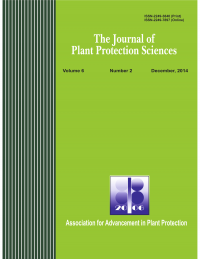Management of root holoparasite Aeginetia pedunculata of (Orobanchaceae), causing wilt of sugarcane by trap and catch crops
1Bikash Ranjan Ray and 2Mrinal Kanti Dasgupta
ABSTRACT
Sugarcane wilt caused by Aeginetia pedunculata (Roxb.) Wall. (Orobanchaceae) is endemic in the command area of Plassey Sugar Mill in the districts of Nadia and Murshidabad in West Bengal. It spreads through water-and soil-borne seeds. With the objective of developing location-specific integrated management schedule of the parasite, crops, other than sugarcane, grown in the target area were evaluated for their potential as trap and catch crops of the parasite. Twelve crops, selected on the basis of germination induction test of A. pedunculata seeds on root exudates as compared to that of three germination inducing chemicals (viz.; NaOCl, TTC (2,3,5-triphenyl tetrazolium chloride) and GR24-a strigol analogue) and growth of the parasite on excised root pieces of prevalent crop cultivars including sugarcane, were evaluated in A. pedunculata infested sugarcane field for their (crops) efficacy to deplete or recharge the parasite seeds in soil. Rice (Oryza sativa L.), maize (Zea mays L.), pearl millet (Pennisetum typhoides Staph. & Hubbard.), italian millet (Setaria italica (L.) Breauv.), black gram (Phaseolus mungo L.), dhaincha (Sesbania aculeata (Willd.) Pers.), sesame (Sesamum indicum L.), jute (Corchorus olitorius L.), pigeon pea (Cajanus cajan (L.) Millsp.), and groundnut (Arachis hypogaea L.) were found effective as trap crops for their ability to germinate the seed of A. pedunculata. Sorghum (Sorghum bicolor (L.) Moench) was identified as a catch crop for its ability to support further growth and development of A. pedunculata up to flowering.
To share on other social networks, click on any share button. What are these?






